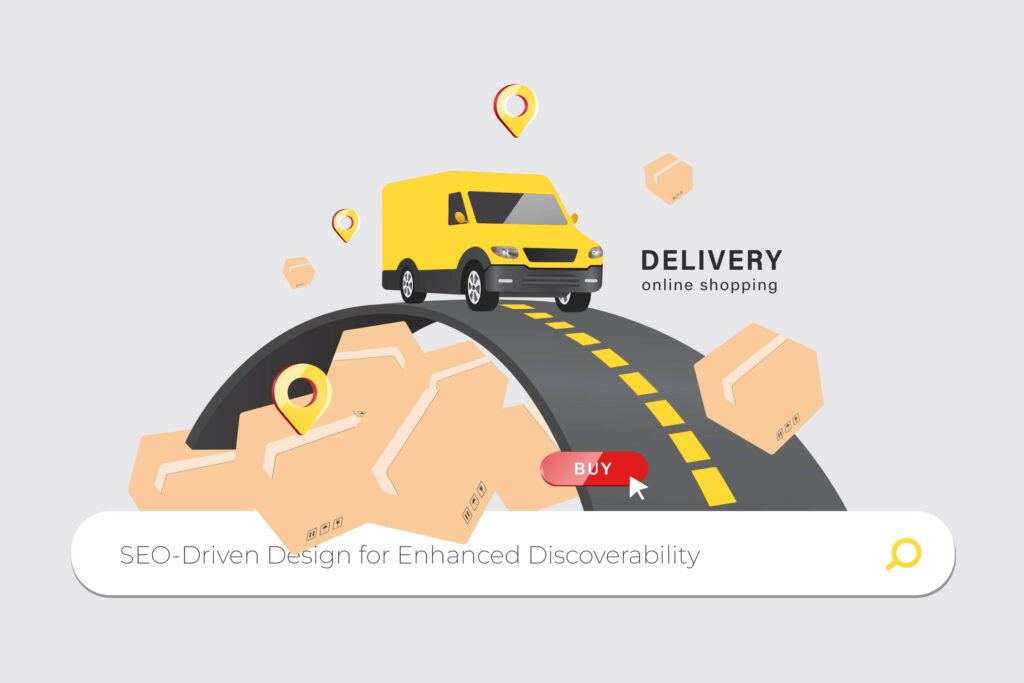1. What are the key elements of a successful eCommerce website design in 2024?
A successful eCommerce website design in 2024 hinges on several key elements: high-quality imagery and video content, SEO-driven design for enhanced discoverability, an intuitive user experience (UX) that converts, a simplified checkout process, personalized shopping experiences, robust mobile optimization, engaging product descriptions, social proof and customer reviews, interactive and immersive features, and a strong focus on sustainability and brand storytelling.
2. How can high-quality imagery improve my eCommerce site’s performance?
High-quality imagery and video content can significantly improve your eCommerce site’s performance by establishing credibility, enhancing product appeal, and providing customers with a clear, detailed view of your products. This visual engagement helps bridge the sensory gap of online shopping, leading to higher conversion rates and reduced return rates.
3. Why is SEO important for eCommerce websites?
SEO is crucial for eCommerce websites because it enhances the site’s visibility on search engines, driving organic traffic. By optimizing your site for search engines, you can capture the attention of potential customers at the moment they’re searching for products you offer, increasing the likelihood of conversions.
4. How does a simplified checkout process impact cart abandonment rates?
A simplified checkout process directly impacts cart abandonment rates by reducing friction and making it easier for customers to complete their purchases. Minimizing the number of steps and required information can significantly lower abandonment rates, as customers are less likely to get frustrated and leave before completing their purchase.
5. What role does personalization play in eCommerce success?
Personalization plays a pivotal role in eCommerce success by enhancing the shopping experience, making customers feel valued, and increasing the relevance of product offerings. Tailoring the shopping experience based on individual user preferences and behaviours leads to higher engagement, loyalty, and conversion rates.
6. How important is mobile optimization for eCommerce sites?
Mobile optimization is essential for eCommerce sites due to the increasing prevalence of mobile shopping. A site that’s optimized for mobile provides a seamless shopping experience across devices, which is crucial for capturing the growing segment of consumers who prefer to shop on their smartphones and tablets.
7. Can engaging product descriptions really increase sales?
Yes, engaging product descriptions can significantly increase sales by compellingly showcasing the benefits and features of your products. Well-written descriptions that resonate with your target audience can persuade customers to make a purchase by helping them understand how your product meets their needs or solves their problems.
8. How does incorporating social proof boost eCommerce website credibility?
Incorporating social proof, such as customer reviews and testimonials, boosts eCommerce website credibility by providing potential buyers with validation from other customers. This form of endorsement helps build trust and reassures visitors of the quality and reliability of your products, encouraging them to make a purchase.
9. What are the benefits of adding interactive and immersive features to an eCommerce site?
Adding interactive and immersive features, like AR views, quizzes, and 360-degree product images, to an eCommerce site can significantly enhance user engagement. These features provide a richer, more engaging shopping experience, helping customers make informed purchasing decisions and setting your site apart from competitors.
10. Why is sustainability important in eCommerce website design?
Sustainability is increasingly important in eCommerce website design as consumers become more environmentally conscious. Highlighting sustainable practices and products can attract a broader audience, build brand loyalty among eco-conscious consumers, and demonstrate your brand’s commitment to making a positive impact on the planet.












